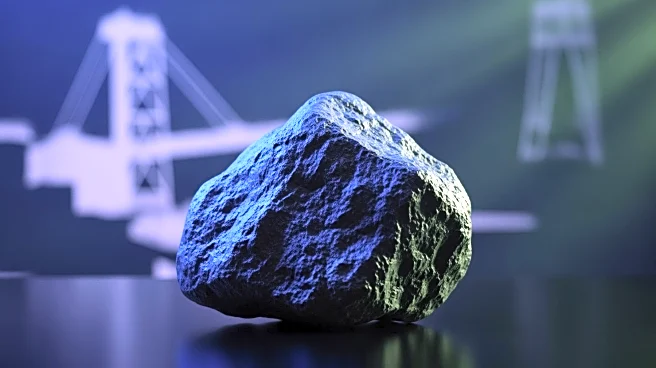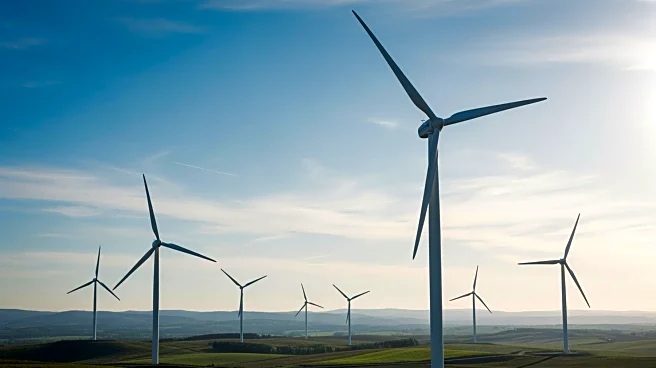What's Happening?
Rio Tinto has commenced operations at the Simandou iron ore project in Guinea, marking a significant milestone for one of the world's largest high-grade iron ore projects. The company has stockpiled approximately
2 million tonnes of ore, with the first shipment expected in mid-November. Additionally, Rio Tinto has signed a 15-year virtual power purchase agreement to source 78.5 MW from TerraGen’s Texas wind project, supporting decarbonization at its Utah copper smelter. The company is also advancing its aluminium technology with the start-up of a 450 kA inert-anode cell at its Alma smelter, a joint venture with Alcoa and Apple.
Why It's Important?
The start of operations at Simandou is crucial for Rio Tinto as it enhances its iron ore production capacity, potentially impacting global iron ore supply and prices. The decarbonization initiatives reflect Rio Tinto's commitment to reducing its carbon footprint, aligning with broader industry trends towards sustainability. These developments could strengthen Rio Tinto's market position and appeal to environmentally conscious investors. The company's strategic moves in renewable energy and low-carbon aluminium production are likely to influence its long-term growth and operational efficiency.
What's Next?
Rio Tinto's upcoming Capital Markets Day on December 4, 2025, will be closely watched for guidance updates on the Simandou ramp-up, cost structure under the new operating model, and decarbonization capital expenditures. Investors will be keen on any announcements regarding the first cargo loading from Simandou and the company's strategic direction in renewable energy and aluminium technology.
Beyond the Headlines
Rio Tinto's focus on decarbonization and renewable energy highlights the growing importance of sustainable practices in the mining industry. The company's efforts could set a precedent for other mining firms, potentially leading to broader industry shifts towards sustainability. The operational momentum at Simandou and advancements in aluminium technology may also influence global commodity markets and trade dynamics.













